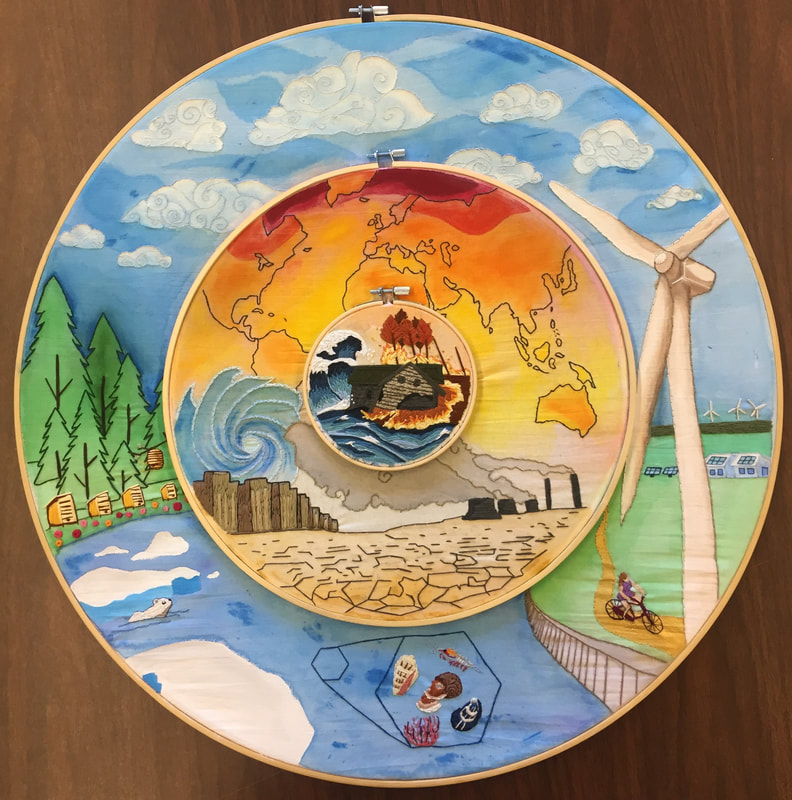|
“Will it rain during my cookout this weekend?” “Will it be cloudy during my photoshoot at the beach?” “Will the snowstorm up north cancel my flight?” As a meteorologist I get many forecasting questions, but as a climatologist I only get one, “How screwed are we?” My answer to this is always the same, “that depends on all of us.” I don’t have a crystal ball that sees into the future, but I can tell you that through evidence, we see clear effects from human influences on the climate. IPCC projections of our planet’s future are rooted in observational evidence, researched through a collaboration of scientists, and branches into Representative Concentration Pathways (RCPs). These scenarios incorporate physical systems and dynamics, population growth, economic change, policy change, and provide a baseline for understanding the future we are creating right now. The inspiration for this project came from The Divine Comedy, in which the poet Virgil guides Dante through circles of heaven, purgatory, and hell. It’s a story about consequences, good and bad, and a reminder that we are responsible for our actions while we are here on earth. RCP 2.6 (Outer Hoop) A renewable energy plan and declining emissions after 2020. It’s important to note that even in this best-case scenario, recovery is slow for ocean acidification. RCP 4.5 (Middle Hoop) Emissions peak and begin to decline after 2050. This includes some nuclear power and renewables, but global temperatures are still increasing steadily. RCP 8.5 (Inner Hoop) The inner hoop depicts our, “business as usual” scenario, RCP8.5, where we stay on the current trajectory of greenhouse gas emissions. Some markers are sea level rise, wildfires, and high population growth. Reference: IPCC AR5 Report "In “Spheres of Heaven and Hell”, Alison Banks uses hand embroidery and paint to illustrate three projections from the Intergovernmental Panel on Climate Change (IPCC). Inspired by Dante’s formulation of hell, in which the afterlife’s realms are organized as a series of concentric circles, Banks’ shows us three potential climate scenarios sewn into three stacked embroidery hoops: the outer hoop depicts human civilization’s best-case scenario, where greenhouse gas emissions decline beginning in 2020; the middle hoop shows what life might look like if emissions begin declining in 2050; and the inner hoop, the most hellish, shows a world set ablaze by humans’ current and unchecked emissions. While Dante’s original inferno consists of 9 circles, Banks’ shows 3, emphasizing the proximity of climate change’s disastrous consequences. Indeed, the inner circle might be the smallest, but it stands out like an irrefutable, fearsome, and maybe galvanizing, bulls-eye, dead center. In the face of all this future-thinking, the judges appreciate the artwork's blatant objecthood: it's big, obviously, but the embroidered sea creatures, multi-colored woven roses, and unexpected shimmer of golden strings show an artist who is thoughtful about the detail this traditional handcraft allows."
- Written by contest judge Ariel Ackerly UGA Capturing Science Link
0 Comments
|









 RSS Feed
RSS Feed